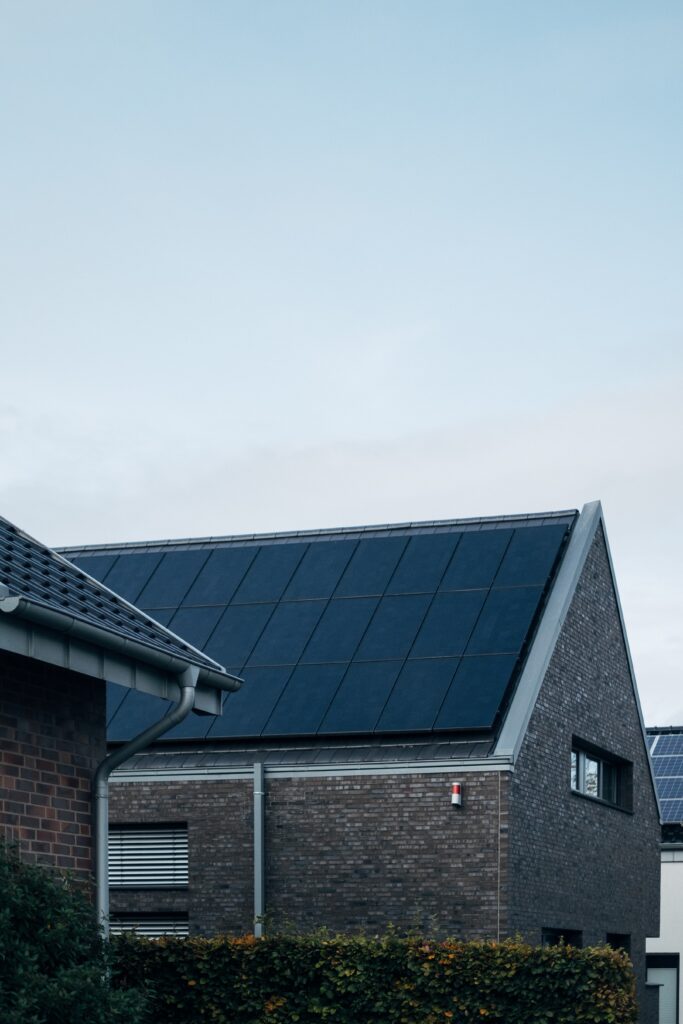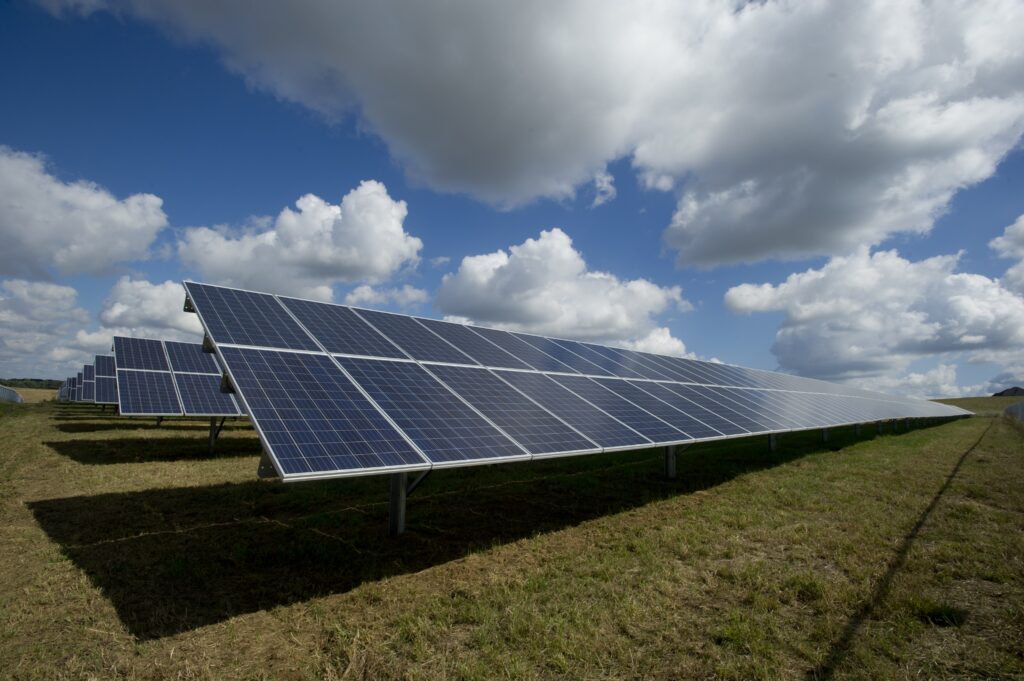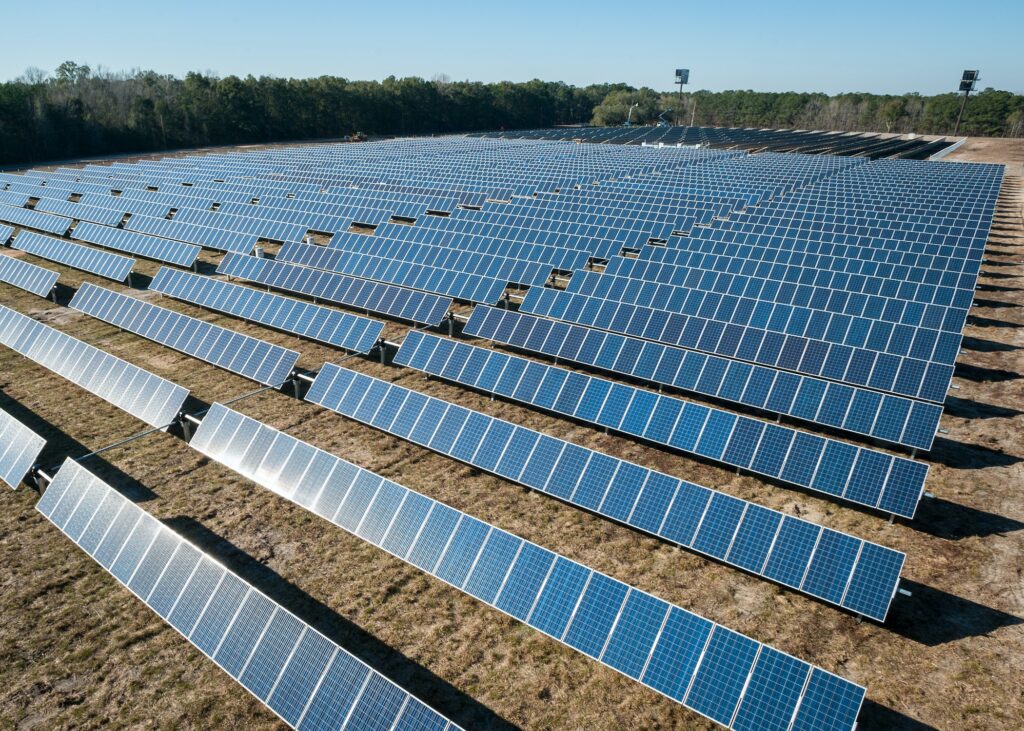Imagine waking up every day to the soothing independence of living completely off the grid. No more reliance on traditional energy sources or monthly utility bills. But how many solar panels does it actually take to power a house on your own? Fortunately, I’ll walk you through the calculations and considerations so that you can harness the power of the sun and make your dream of a self-sufficient home a reality. Prepare to be enlightened!

Understanding Solar Panels and Off-Grid Living
Explanation of solar panels
Solar panels, also known as photovoltaic (PV) panels, are devices that convert sunlight into electricity. They consist of multiple solar cells that harness the energy from the sun and convert it into usable electrical power. Each solar cell contains a semiconductor material, usually silicon, which generates an electric current when exposed to sunlight. This current is then converted to usable electricity through an inverter.
Defining off-grid living
off-grid living refers to the lifestyle of relying solely on self-generated energy sources instead of connecting to the traditional power grid. It means generating your electricity through renewable sources like solar panels, wind turbines, or hydroelectric systems, rather than relying on the utility company for power. Off-grid living also involves managing and conserving energy efficiently to meet the energy needs of a household without grid connections.
How solar panels facilitate off-grid living
Solar panels play a crucial role in enabling off-grid living. By harnessing the energy from the sun, solar panels provide a sustainable and renewable source of electricity. When properly sized and designed, solar panels can generate enough power to meet the energy needs of a household, even without a connection to the power grid. With advancements in technology and improvements in efficiency, solar panels have become more affordable and accessible, making off-grid living a viable option for many households.
The Energy Requirement of a Household
Determining daily energy usage
To calculate the energy requirements of a household, it is essential to determine the average daily energy consumption. This can be done by looking at the energy bills and analyzing the monthly usage patterns. By summing up the energy consumed over a month and dividing it by the number of days, you can estimate the average daily energy usage.
Differentiating between energy-efficient and non-energy-efficient households
Energy-efficient households consume less energy for the same level of comfort and functionality compared to non-energy-efficient households. By implementing energy-saving practices and using energy-efficient appliances, households can significantly reduce their energy consumption. This reduces the number of solar panels needed to meet their energy needs and increases the overall efficiency of the off-grid system.
Effect of local climate on energy consumption
The local climate has a significant impact on energy consumption, particularly for heating, cooling, and ventilation. In regions with extreme temperatures, the energy requirements for maintaining comfortable indoor conditions can be higher. Understanding the climate of your location and assessing the associated energy demands is crucial in determining the size and capacity of the solar panel system for off-grid living.
Calculating Solar Panel Requirements
The role of energy efficiency
Improving energy efficiency is vital in reducing the number of solar panels needed to meet the energy requirements of a household. By implementing energy-saving measures such as insulation, LED lighting, and high-efficiency appliances, you can significantly reduce your overall energy consumption. This, in turn, decreases the number of solar panels required and lowers the initial investment cost.
Understanding the power ratings of solar panels
Solar panels are rated based on their power output in watts, which represents the amount of electricity they can generate under specific conditions. The power rating determines the size and capacity of the solar panel system needed to meet the energy demands of a household. It is important to consider both the daily energy consumption and the location-specific factors to accurately calculate the required number of solar panels.
Practical methods of calculation
To calculate the solar panel requirements, you can use a formula that combines energy consumption, solar hours, and the power rating of the solar panels. By multiplying the daily energy consumption by the number of solar hours and dividing it by the power rating of the solar panels, you can estimate the total number of panels needed. It is advisable to consult with a solar energy professional to ensure accurate calculations and optimal system design.
The Impact of Location on Solar Panel Performance
How geography affects solar energy production
The geographical location of a property impacts the amount of sunlight it receives throughout the year, which directly affects solar energy production. Regions closer to the equator generally receive more sunlight, resulting in higher solar energy potential. However, even locations with less solar intensity can still generate significant amounts of electricity through solar panels. Understanding the solar resource potential of your specific location helps in determining the system size and capacity required for off-grid living.
Calculating solar hours for your location
Solar hours refer to the amount of time that solar panels receive direct sunlight in a day. The number of solar hours varies depending on the time of year, latitude, and local weather conditions. Weather data and solar radiation maps can provide valuable insights into the average daily solar hours for different regions. By accurately calculating the solar hours for your location, you can better estimate the solar panel requirements for off-grid living.
Effect of seasonal variations
Seasonal variations in sunlight intensity affect the performance of solar panels. Longer days in summer result in higher solar energy production, while shorter days in winter reduce the energy output. To account for these variations, the solar panel system should be sized and designed to meet the energy demands during the seasons with less sunlight. This ensures a reliable and consistent energy supply for off-grid living throughout the year.

Different Types of Solar Panels
Monocrystalline solar panels
Monocrystalline solar panels are made from a single crystal structure, typically silicon, which makes them highly efficient and durable. They have a black appearance and are known for their high power output, making them suitable for smaller spaces with limited roof area. Monocrystalline panels have a higher cost compared to other types but offer better efficiency and performance in low-light conditions.
Polycrystalline solar panels
Polycrystalline solar panels are made from multiple silicon crystals, which gives them a distinctive blue color. They are less expensive to manufacture than monocrystalline panels, although they have slightly lower efficiency. Polycrystalline panels are a popular choice for larger installations with ample roof space, as they offer a good balance of cost and performance.
Thin-film solar panels
Thin-film solar panels are made from a variety of materials, including amorphous silicon, cadmium telluride, and copper indium gallium selenide. They have a flexible and lightweight design, allowing for easy integration in various applications. While thin-film panels are less efficient than crystalline panels, they perform better in low-light conditions and at higher temperatures. They are often used in niche applications where traditional solar panels are impractical or not feasible.
Comparing performance and efficiency
When choosing between different types of solar panels, it is important to consider the specific requirements and constraints of your off-grid living setup. Monocrystalline solar panels offer higher efficiency and better performance in limited spaces, but at a higher cost. Polycrystalline panels provide a good balance of cost and performance for larger installations. Thin-film panels offer flexibility and can be used in unique applications. Assessing your energy needs, budget, and available space will help determine the most suitable solar panel type for your off-grid living system.
Battery Storage Systems for Off-Grid Living
Importance of battery backup systems
Battery backup systems play a crucial role in off-grid living by storing excess electricity generated by solar panels for use when sunlight is unavailable. They provide a reliable and continuous energy supply, especially during nights, cloudy days, or periods of high demand. Battery systems ensure that the energy generated is efficiently stored and utilized, reducing reliance on the power grid and enhancing the self-sufficiency of the off-grid living setup.
Types of solar batteries
There are different types of solar batteries available for off-grid living systems. Lead-acid batteries, both flooded and sealed (gel or AGM), are commonly used due to their cost-effectiveness. Lithium-ion batteries are gaining popularity for their higher energy density and longer lifespan. They offer better efficiency, faster charging, and a higher depth of discharge, making them a suitable choice for off-grid living systems. Nickel-iron and saltwater batteries are also available, although they have specific advantages and limitations.
Factors to consider when choosing batteries
When selecting batteries for off-grid living, several factors should be considered. These include battery capacity, voltage, cycle life, depth of discharge, efficiency, maintenance requirements, and cost. The choice of battery should align with the energy requirements, expected lifespan, and budget of the off-grid living system. Consulting with a solar energy expert can help in evaluating the best battery options and ensuring the long-term performance and reliability of the off-grid setup.

Setting Up Solar Panels For Off-Grid Living
Planning and design phase
The planning and design phase of setting up solar panels for off-grid living is crucial for a successful and efficient system. It involves assessing the energy requirements, evaluating the available space for solar panel installation, selecting the appropriate solar panel type, and designing the system layout. Factors such as shading, orientation, tilt, and interconnection with the battery system need to be considered to maximize solar energy production. Engaging experienced solar professionals can help in designing a system that is tailored to the specific needs and constraints of the off-grid living setup.
Installation process
The installation process involves mounting the solar panels on a sturdy and appropriate structure, typically the roof of the building. The panels are positioned to maximize exposure to sunlight and minimize shading from nearby obstacles. Wiring and connections are carefully done to ensure the proper flow of electricity from the solar panels to the inverter and battery system. As solar installations involve working with electrical components, it is advisable to hire licensed professionals for the installation process to ensure safety and compliance with local regulations.
Maintenance and repair
Regular maintenance is essential to ensure the optimal performance and longevity of the solar panel system. This includes cleaning the panels to remove dirt and debris, inspecting the connections for any signs of wear or damage, and monitoring the system’s energy production and battery performance. In case of any issues or malfunctions, prompt repairs should be undertaken by qualified technicians to minimize downtime and ensure the continuous operation of the off-grid living system.
Cost Involved in Running a House Off the Grid
Cost of solar panels
The cost of solar panels varies depending on the size, type, brand, and efficiency of the panels. It also depends on the specific requirements and constraints of the off-grid living system. While the initial investment cost may be higher compared to grid-connected setups, the long-term benefits of energy savings and independence from utility bills make solar panels a cost-effective solution for off-grid living.
Installation costs
The installation costs of a solar panel system for off-grid living include labor fees, equipment costs, wiring, and any necessary permits or inspections. The complexity of the installation, distance from utility lines, and accessibility of the property can also impact the overall installation costs. It is advisable to obtain multiple quotes from reputable solar installation companies to compare costs and ensure a competitive pricing structure.
Maintenance costs
Maintenance costs for a solar panel system are generally low. Regular cleaning, inspection, and monitoring can be done by the homeowners themselves. However, occasional professional maintenance and repairs may be required, which might incur additional costs. It is important to factor in these ongoing maintenance expenses while evaluating the overall cost of running a house off the grid.
Cost of battery backup systems
The cost of battery backup systems depends on the capacity, voltage, and type of batteries chosen. Lithium-ion batteries generally have a higher upfront cost but offer longer lifespan and better performance. Lead-acid batteries have a lower upfront cost but might require replacement more frequently. Assessing the energy storage requirements, expected lifespan, and overall budget helps in determining the most cost-effective battery backup system for off-grid living.
Challenges and Solutions with Off-Grid Solar Systems
Common problems with off-grid solar systems
Off-grid solar systems may face several challenges, such as limited energy storage capacity, insufficient solar panel output, intermittent power supply, and system failures. These challenges can arise due to poor system design, incorrect sizing of components, equipment malfunctions, or adverse weather conditions. Understanding the common problems associated with off-grid solar systems is essential in proactively addressing them and ensuring the reliability and efficiency of the system.
Proactive and reactive solutions
Proactive solutions for off-grid solar systems include proper system design, accurate component sizing, regular maintenance, and monitoring. Reactive solutions involve troubleshooting the system, identifying and resolving any issues promptly, and seeking professional assistance when needed. Regularly assessing the system’s performance and making necessary adjustments can help optimize the energy output and address any challenges that may arise.
Importance of system maintenance
Regular system maintenance is crucial in maximizing the performance and longevity of off-grid solar systems. This includes cleaning the solar panels, inspecting electrical connections, monitoring battery performance, and updating system software. By conducting regular maintenance, potential problems can be identified and resolved early on, ensuring the uninterrupted operation of the off-grid living setup.
Case Studies of Off-Grid Solar Power Homes
Examples of solar-powered homes
There are numerous examples of successful off-grid solar power homes around the world. One notable example is the Tesla Solar Roof project, where solar panels are integrated into the roof tiles themselves, creating a visually appealing and efficient solution. Another example is the Arkup floating home, equipped with solar panels and a battery system that allows for complete off-grid living, even on the water. These case studies demonstrate the feasibility and advantages of off-grid solar power homes in various contexts.
Lessons learned
Case studies of off-grid solar power homes have revealed important lessons regarding system design, energy efficiency, and maintenance. One key lesson is the significance of accurate energy consumption estimation and the alignment of system capacity. Understanding the limitations and capabilities of different solar technologies also plays a crucial role in implementing an effective off-grid living setup. Regular monitoring, maintenance, and troubleshooting are essential for identifying and addressing potential issues before they become significant problems.
Adaptations for different climates and locations
Off-grid solar power homes have been successfully adapted to different climates and locations worldwide. In colder climates, additional insulation and energy-efficient heating systems are essential to minimize heat loss and optimize energy efficiency. In hotter climates, proper ventilation, shading, and cooling strategies help maintain comfortable indoor conditions using minimum energy. Adapting off-grid living systems to the specific climate and location ensures optimal performance and efficiency throughout the year.
Success stories
There are numerous success stories of individuals and families who have adopted off-grid living with solar power systems. These success stories highlight the increased energy independence, reduced environmental impact, and financial savings associated with off-grid living. They emphasize the lifestyle benefits of renewable energy and serve as inspiration for others considering a similar path. By showcasing these success stories, greater awareness and acceptance of off-grid living can be fostered, promoting a sustainable future.




